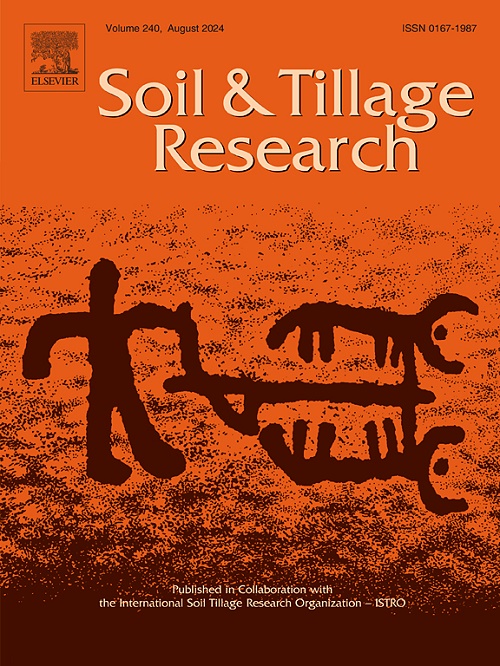Multi-scale analysis of soil property variability in Northeast China's black soils using advanced geospatial models
IF 6.1
1区 农林科学
Q1 SOIL SCIENCE
引用次数: 0
Abstract
Black soils are critical to global agriculture but are increasingly threatened by fertility decline due to intensive land use, particularly in Northeast China. Accurately mapping and understanding the spatial variability of soil properties in these spatially heterogeneous landscapes is vital for sustainable soil management. However, existing models often fail to capture the intricate multi-scale environmental drivers that influence soil dynamics. This study aimed to assess whether geographically weighted artificial neural networks (GWANN) as a localized nonlinear model can more effectively capture the spatial variability of soil organic carbon (SOC), total nitrogen (TN), and total phosphorus (TP) than global models such as artificial neural networks (ANN) and random forest (RF). Additionally, two-dimensional empirical mode decomposition (2D-EMD) and semivariogram analysis were applied to identify scale-dependent variation patterns, alongside variation partitioning analysis to quantify the contributions of climatic, topographic, and biological soil-forming factors. Results showed that GWANN outperformed RF and ANN, achieving reductions in RMSE by 0.063 g/kg and 0.362 g/kg for SOC, 0.013 g/kg and 0.028 g/kg for TN, and 0.005 g/kg and 0.006 g/kg for TP, providing more accurate predictions across all three soil properties. The 2D-EMD analysis revealed that meteorological factors predominantly drive large-scale variability (374–483 km) across all three soil properties. At medium (62–118 km) and small (14–28 km) scales, biological soil factors emerged as the main contributors for SOC and TN, while TP was influenced by meteorological factors at medium scale and by biological soil factors at small scale. Although topographic factors did not dominate at any particular scale, their relative contribution increased at medium and large scales compared to the small scale. This study provides valuable insights for optimizing soil fertility management and promoting sustainable land use practices in black soil regions.
基于先进地理空间模型的东北黑土土壤性质多尺度变化分析
黑土对全球农业至关重要,但由于土地集约利用,特别是在中国东北地区,黑土正日益受到肥力下降的威胁。准确绘制和理解这些空间异质性景观中土壤性质的空间变异性对可持续土壤管理至关重要。然而,现有的模型往往不能捕捉影响土壤动力学的复杂的多尺度环境驱动因素。本研究旨在评估地理加权人工神经网络(GWANN)作为一个局部非线性模型是否比人工神经网络(ANN)和随机森林(RF)等全局模型更有效地捕捉土壤有机碳(SOC)、全氮(TN)和全磷(TP)的空间变异性。此外,利用二维经验模态分解(2D-EMD)和半变异函数分析来确定尺度相关的变异模式,以及变异分区分析来量化气候、地形和生物土壤形成因子的贡献。结果表明,GWANN优于RF和ANN,对有机碳的RMSE降低了0.063 g/kg和0.362 g/kg,对全氮的RMSE降低了0.013 g/kg和0.028 g/kg,对全TP的RMSE降低了0.005 g/kg和0.006 g/kg,对所有三种土壤性质的预测都更准确。2D-EMD分析显示,气象因子主要驱动所有三种土壤性质的大尺度变率(374-483 km)。在中尺度(62 ~ 118 km)和小尺度(14 ~ 28 km)上,土壤生物因子是土壤有机碳和全氮的主要贡献因子,而全磷在中尺度上受气象因子的影响,在小尺度上受土壤生物因子的影响。地形因子在任何特定尺度上都不占主导地位,但在中、大尺度上相对于小尺度,其相对贡献有所增加。该研究为优化黑土区土壤肥力管理和促进土地可持续利用提供了有价值的见解。
本文章由计算机程序翻译,如有差异,请以英文原文为准。
求助全文
约1分钟内获得全文
求助全文
来源期刊

Soil & Tillage Research
农林科学-土壤科学
CiteScore
13.00
自引率
6.20%
发文量
266
审稿时长
5 months
期刊介绍:
Soil & Tillage Research examines the physical, chemical and biological changes in the soil caused by tillage and field traffic. Manuscripts will be considered on aspects of soil science, physics, technology, mechanization and applied engineering for a sustainable balance among productivity, environmental quality and profitability. The following are examples of suitable topics within the scope of the journal of Soil and Tillage Research:
The agricultural and biosystems engineering associated with tillage (including no-tillage, reduced-tillage and direct drilling), irrigation and drainage, crops and crop rotations, fertilization, rehabilitation of mine spoils and processes used to modify soils. Soil change effects on establishment and yield of crops, growth of plants and roots, structure and erosion of soil, cycling of carbon and nutrients, greenhouse gas emissions, leaching, runoff and other processes that affect environmental quality. Characterization or modeling of tillage and field traffic responses, soil, climate, or topographic effects, soil deformation processes, tillage tools, traction devices, energy requirements, economics, surface and subsurface water quality effects, tillage effects on weed, pest and disease control, and their interactions.
 求助内容:
求助内容: 应助结果提醒方式:
应助结果提醒方式:


